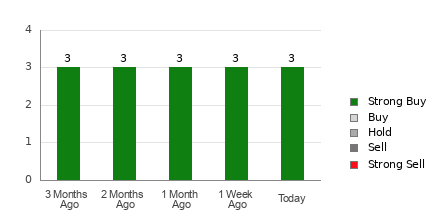Bristol Myers Squibb vs. Johnson & Johnson: A Comparative Analysis for Investors
In the current pharmaceutical landscape, Bristol Myers Squibb stock (NYSE: BMY) appears to be a more appealing investment than Johnson & Johnson stock (NYSE: JNJ). Notably, BMY trades at a forward earnings multiple of 8.3x for expected earnings in 2025, while JNJ is at 14.7x. We anticipate that this gap will close, favoring BMY due to its gains in market share through new drugs. Below, we delve into several factors, including historical revenue growth, returns, and valuation, to support our view that BMY will outperform JNJ in the coming years.
1. Stock Performance: Underperforming the Market
Over the past few years, both stocks have lagged behind the broader market. BMY’s share price has barely changed, moving from approximately $55 in early January 2021 to around $60 today. In contrast, JNJ’s stock has increased about 10%, from $140 to $155 during the same time frame. By comparison, the S&P 500 index has surged 60% in this nearly four-year span.
Examining annual returns reveals that BMY’s performance was inconsistent: gaining 3% in 2021, 19% in 2022, but dropping by 26% in 2023. JNJ had returns of 11% in 2021, 6% in 2022, and -9% in 2023. Overall, both companies underperformed the S&P index in 2021 and 2023, which itself had returns of 27% in 2021, -19% in 2022, and 24% in 2023.
Additionally, maintaining consistent outperformance against the S&P 500 has proven challenging for individual stocks, including major names in the Health Care sector like PFE, MRK, and UNH, alongside tech giants GOOG, TSLA, and MSFT. In contrast, the Trefis High Quality (HQ) Portfolio, comprising 30 stocks, outperformed the S&P 500 every year across the same timeframe, showcasing better returns with lower associated risks.
2. Revenue Growth: J&J Holds the Advantage
Johnson & Johnson has experienced stronger revenue growth, increasing by 11.4% from $78.7 billion in 2021 to $87.7 billion over the last twelve months. Bristol Myers Squibb, conversely, saw its sales rise by just 2.3%, climbing from $46.4 billion to $47.4 billion.
Struggles with legacy drug sales, notably Revlimid, have inhibited BMY’s growth. However, its anticoagulant Eliquis remains strong, reporting over $12 billion in sales last year, with future growth anticipated despite upcoming biosimilar competition. New treatments like Camzyos are also expected to mitigate the decline in Eliquis sales.
Newer drugs such as Camzyos, Sotyktu, and Opdualag are projected to each cross the $1 billion sales mark by 2026. Bristol Myers Squibb aims to fuel growth through acquisitions, having completed three acquisitions this year: Mirati Therapeutics, RayzeBio, and Karuna Therapeutics. Further, recent FDA approval for the schizophrenia medication Cobenfy anticipates peak sales of over $7 billion.
On the other hand, J&J’s revenue climb is bolstered by strong performances across both its pharmaceuticals and medical devices sectors. Treatments like Darzalex for multiple myeloma and Stelara for autoimmune conditions have driven growth. New drugs such as Carvykti and Spravato are steadily increasing market share, though older medications like Remicade face significant challenges from generic alternatives.
3. Profitability Comparison: J&J Tops BMY
Profitability metrics favor J&J, with its operating margin improving from 26.6% in 2021 to 27.5% in 2023. BMY, in contrast, has seen a slight decline, with margins decreasing from 18.4% to 18.2%. Recently, BMY processed a substantial one-time expense of $12.1 billion related to the Karuna acquisition, forecasting a dramatic drop in earnings to $0.85 per share in 2024 compared to 2023’s $7.51.
Although J&J’s operating margins have also taken a minor hit due to special charges and acquisitions, it expects adjusted earnings of about $9.91 per share for 2024, slightly down from previous estimates. J&J reported adjusted earnings of $9.92 per share in 2023.
4. Financial Position: J&J Leads the Way
When assessing financial stability, J&J showcases strength with a 10% debt-to-equity ratio, significantly lower than 43% for BMY. Additionally, J&J holds 11% in cash against assets, outpacing BMY’s 9%, suggesting a more secure financial position for J&J.
5. Key Takeaways: Favoring Bristol Myers Squibb
In conclusion, while J&J exhibits stronger revenue growth, profitability, and a more favorable financial posture—explaining the valuation disparity—Bristol Myers Squibb’s future potential seems promising. BMY is trading at 8x its 2025 expected earnings of $7.20, below its five-year average P/E ratio of 10x. This positioning, alongside recent developments like the approval of Cobenfy, could enhance its growth prospects and offset declines in legacy drug sales.
On the other hand, JNJ currently trades at 15x expected earnings of $9.95 per share, compared to a three-year average P/E of 17x. We estimate that J&J’s share price could rise to $172, indicating over 10% upside from its current price of $156, though concerns linger regarding the impact of Stelara’s loss of exclusivity in 2025.
Though our analysis suggests BMY could be the superior choice in the current marketplace, comparing it with other relevant pharmaceutical companies can yield additional insights. For further evaluations, check out our Peer Comparisons.
| Returns | Nov 2024 MTD [1] |
2024 YTD [1] |
2017-24 Total [2] |
| BMY Return | 6% | 19% | 30% |
| JNJ Return | -2% | 2% | 67% |
| S&P 500 Return | 5% | 25% | 167% |
| Trefis Reinforced Value Portfolio | 8% | 24% | 898% |
[1] Returns as of 11/26/2024
[2] Cumulative total returns since the end of 2016
Invest with Trefis Market-Beating Portfolios
See all Trefis Price Estimates
The views and opinions expressed herein are the views and opinions of the author and do not necessarily reflect those of Nasdaq, Inc.








